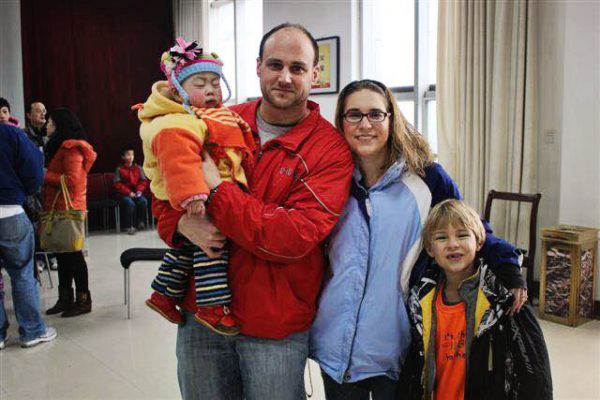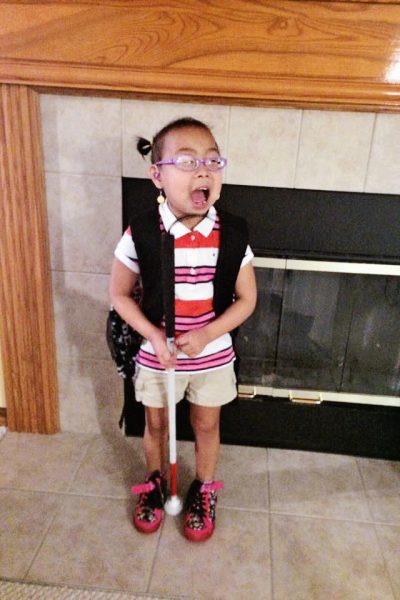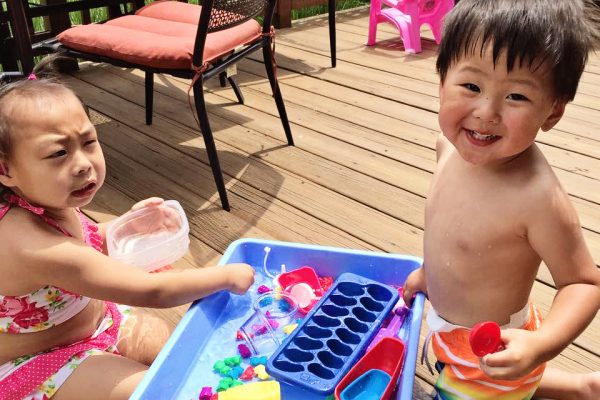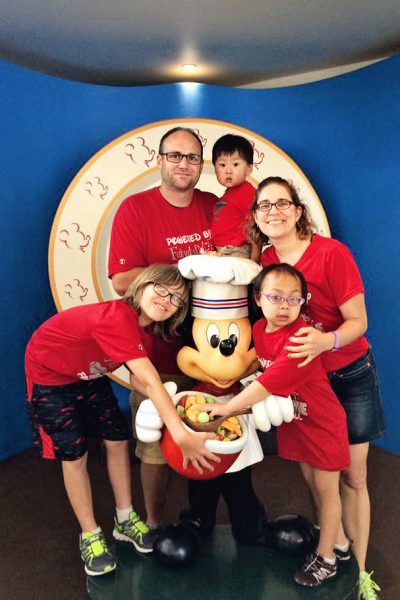Princess.
Uniquely and wonderfully made.
Perfect.
One of a kind.
(Actually, 1 of 347 in our state and 9,574 in the U.S.*)
All words to describe our daughter Lily who joined our family in January of 2013.

Her file stated bilateral congenital glaucoma. Fast forward three years… and she is legally blind, wears a sclera shell in one eye, and hearing aids due to bilateral sensorineural hearing loss.
Our daughter has a dual-sensory loss.
There I said it.
It still can drop me to my knees in a rage of “Why her?” and “Why now?” Hasn’t she lost enough in her short life-birth family, friends, and ayis in her SWI, birth country, vision… and now hearing?!
Grief
Once I grieved her losses (she has yet to realize she has lost so much – or maybe she does realize but chooses joy instead) I was able to go back to the beginning when we first reviewed her file and create an action plan.
Step 1: Grieve – check! Feel free to revisit this step whenever necessary.
Step 2: Research and reach out.
Step 3: Advocate for and with your child.

Research and Reach Out
I am a planner and a reader. To understand a dual-sensory loss I needed to do my research and reach out to others. Since Lily is a rare gem, I needed to cast my net wide to find other moms with practical advice.
Facebook is the perfect place for this. Pinterest is another friend for a healthy sensory diet.
Since Lily’s original diagnosis was glaucoma, I knew the high risk of blindness and the probability that she would be a Braille reader. Sensory bins were a huge part of our regular routine, well in the warmer months anyway. We’ve all seen the sensory bin meme. My bins were by no means Pinterest worthy, and sometimes they were a mixture of our last three bins, but they did the trick.

Lily is now five and is starting to read Braille books. Praise the Lord!
Another way to reach out is by talking with the moms in the therapy waiting rooms. Resist the urge to mindlessly be on your cell phone and start up a conversation. As a result of some conversations started I am part of an eclectic group of moms that have started meeting for dinner once a month. We range in age (20’s-50’s) and life situations (widows, divorcee, full-time working moms and stay at home moms). We don’t solve the world’s problems, but it is nice to know other moms are in the trenches with you and can offer an “Oh yeah, we have been there,” or a “Great job handling that sticky situation.”
Advocate for and with your Child
I knew I would be Lily’s biggest and best advocate and that it would be a job in itself.
Shortly before she came home I stepped away from my teaching position of an Intervention Specialist. I had been in that position for 10 years, but I knew I could not effectively service my students on IEPs as well as keep track of my own child’s IEP. I needed a break somewhere!
My years as an Intervention Specialist gave me the background knowledge on how best to advocate for Lily as I knew the law and best practices. I also had enough friends in the profession that I could reach out to and bounce ideas off of because sometimes a momma cannot think straight when her baby is involved.
That brings me to the next part: it never hurts to have another advocate, or two, with you at meetings. My husband is a civil engineer by trade and isn’t very familiar with IEPs. What he is familiar with is meetings and how to get done what needs to be done. He is my biggest ally at IEP meetings. I tell him what my non-negotiables are and what I’m willing to compromise. He makes sure that we walk away with Lily’s needs being met.
I also like to have a blind adult at every meeting. This ensures that we are thinking ahead to her future and teaching her the skills to become a productive, independent citizen when she grows up.
You may feel like that is overkill and for our current situation it is. However, the previous school district my daughter was in did not have the services available to help her succeed and they were resistant to obtain them. At times I felt they were intimidated by my background as an Intervention Specialist and I was traipsing on their territory so it became a power struggle. I knew my rights as a parent and Lily’s rights as a student and I was ready to call in the big dogs – lawyers.
God had other plans.
We were presented with an opportunity to move and as much as I hated to admit defeat, I knew it was time to take our ball and play on another court.
And we are so glad we did. Our daughter was accepted with open arms into her new school district, and they have done everything in their power to make sure she is caught up from the lack of instruction at her previous district.
And my blind advocate is part of Lily’s IEP team and has very high expectations for her-which she is meeting and surpassing!
In the future I will teach Lily how to do more advocating for herself. Since she is still young we work on very basic self-advocating… like communicating effectively with those around us and communicating her wants and needs.

*According to the 2015 National Child Count of Children and Youth Who are Deaf-Blind Report conducted by the National Center of Deaf-Blindness
Resources
Wonder Baby: resources for parents of child with visual and/or multiple disabilities; articles ranging from sensory toys, IEP organizers and everything in between
Brain Balance: a non-medical, drug-free program for kids based on Dr. Robert Melillo’s books Disconnected Kids and Reconnected Kids
Pathstol Literacy: literacy ideas for blind children
My Pinterest Boards
* Board title “L” is the best for ideas from sensory bins to Braille activities
* Co-pinner for Bethel China pages:
Adoption
Education:
Braille
Activities with Light
Technology
FB group I moderate for parents of children with low vision
Hadley School for the Blind: distance education programs for people who are blind, their families and/or service providers; learn about eye diseases, independent living or even learn Braille (for free)
PBS Kids – learn about Braille and write a note in Braille
National Family Association for Deaf-Blind – a way for families to connect
Resources for Braille books (range in cost from free – low-cost and digital or physical books)
* Seedlings
* Bookshare
* Braille Institute
* American Action Fund
* National Braille Press
* American Printing House for the Blind/Dolly Parton
* National Federation of the Blind
– guest post by Molly

























I am so proud of you!
Very well written and informative. Am in the Columbus area and look forward to catching up with you and Nate soon. Hope you have a Merry Christmas!!!
Great job writing the article, Molly!!